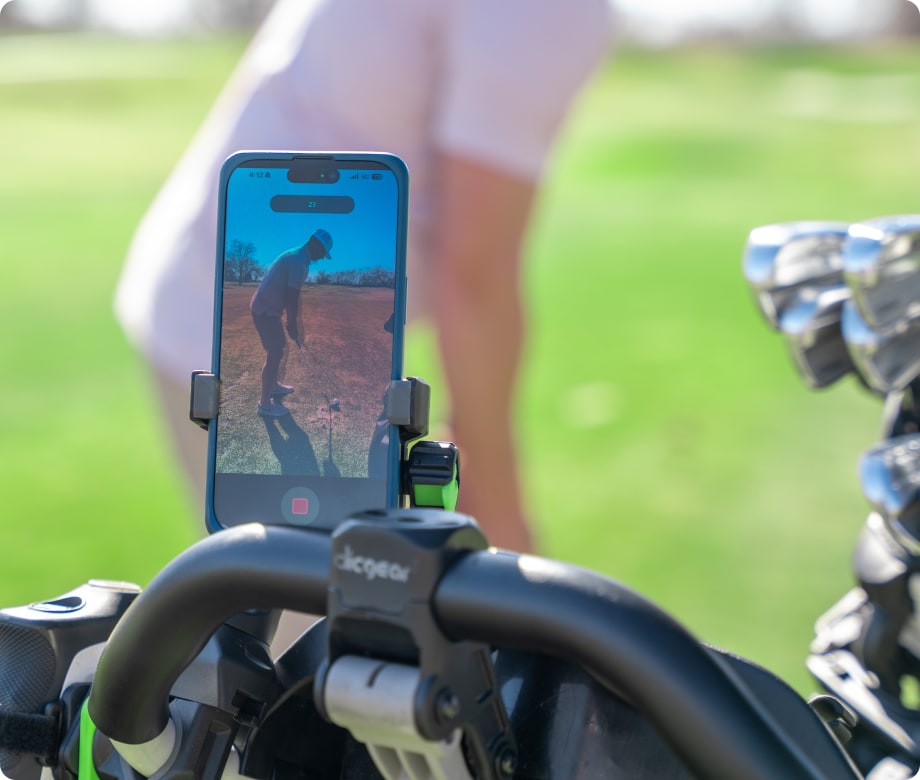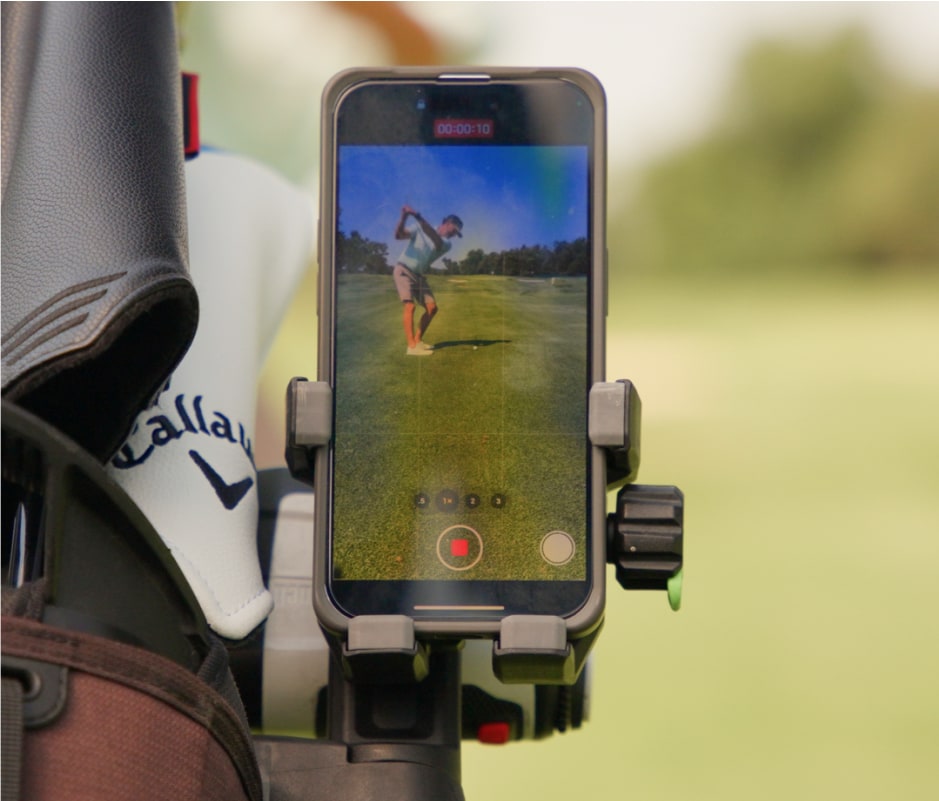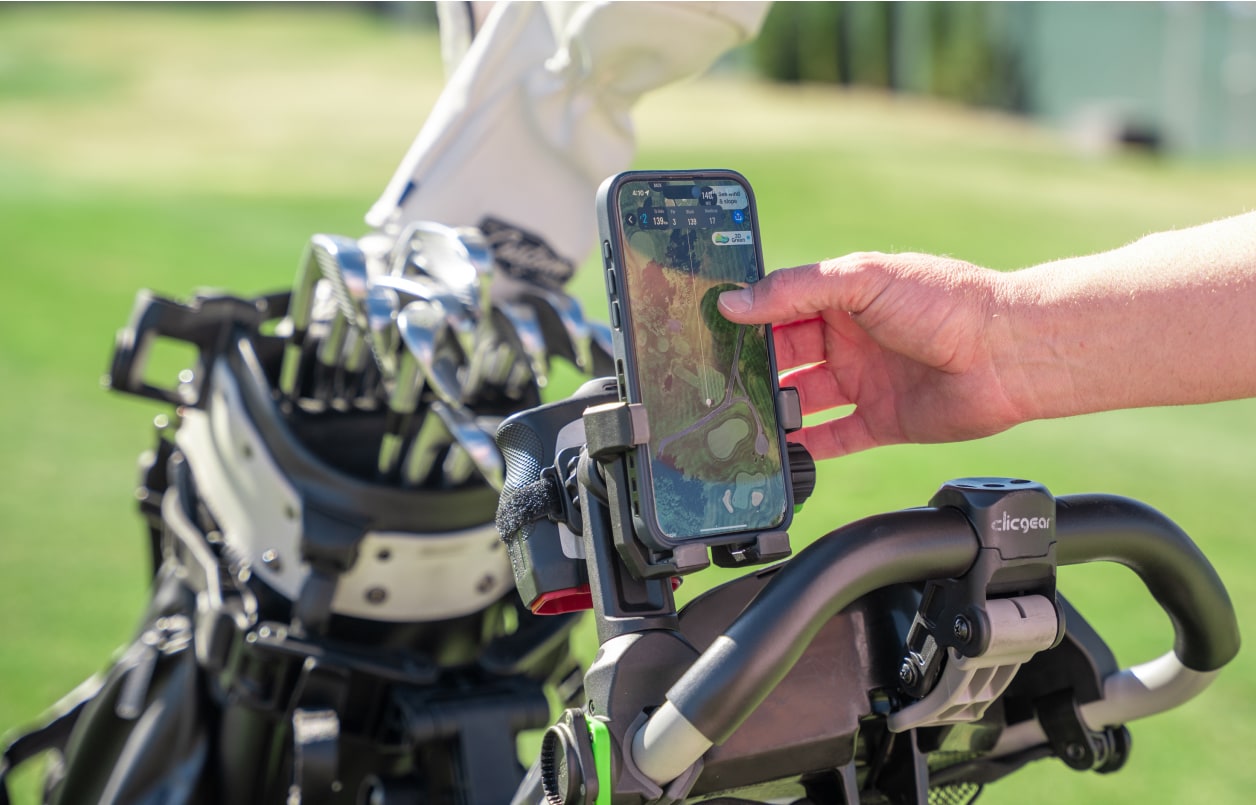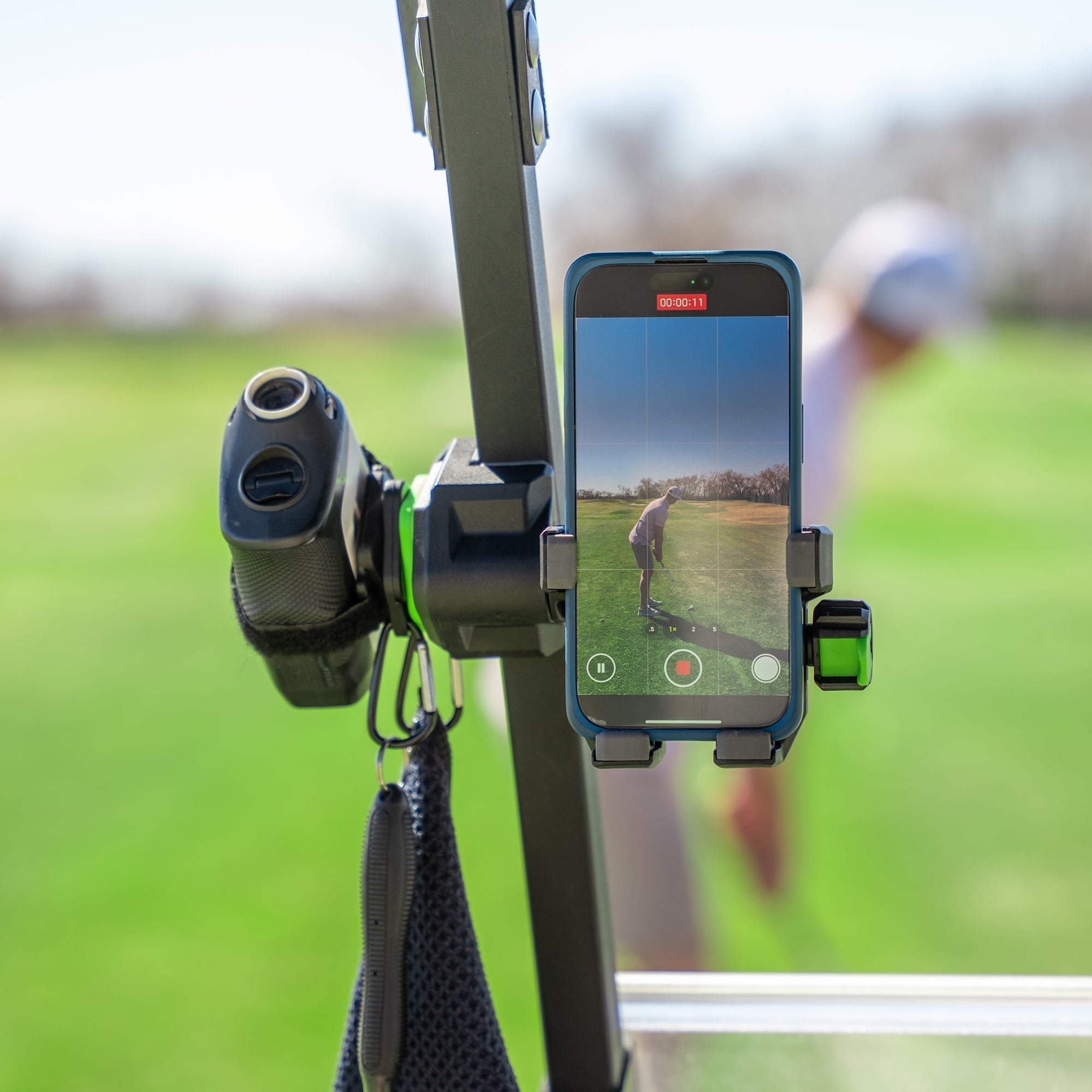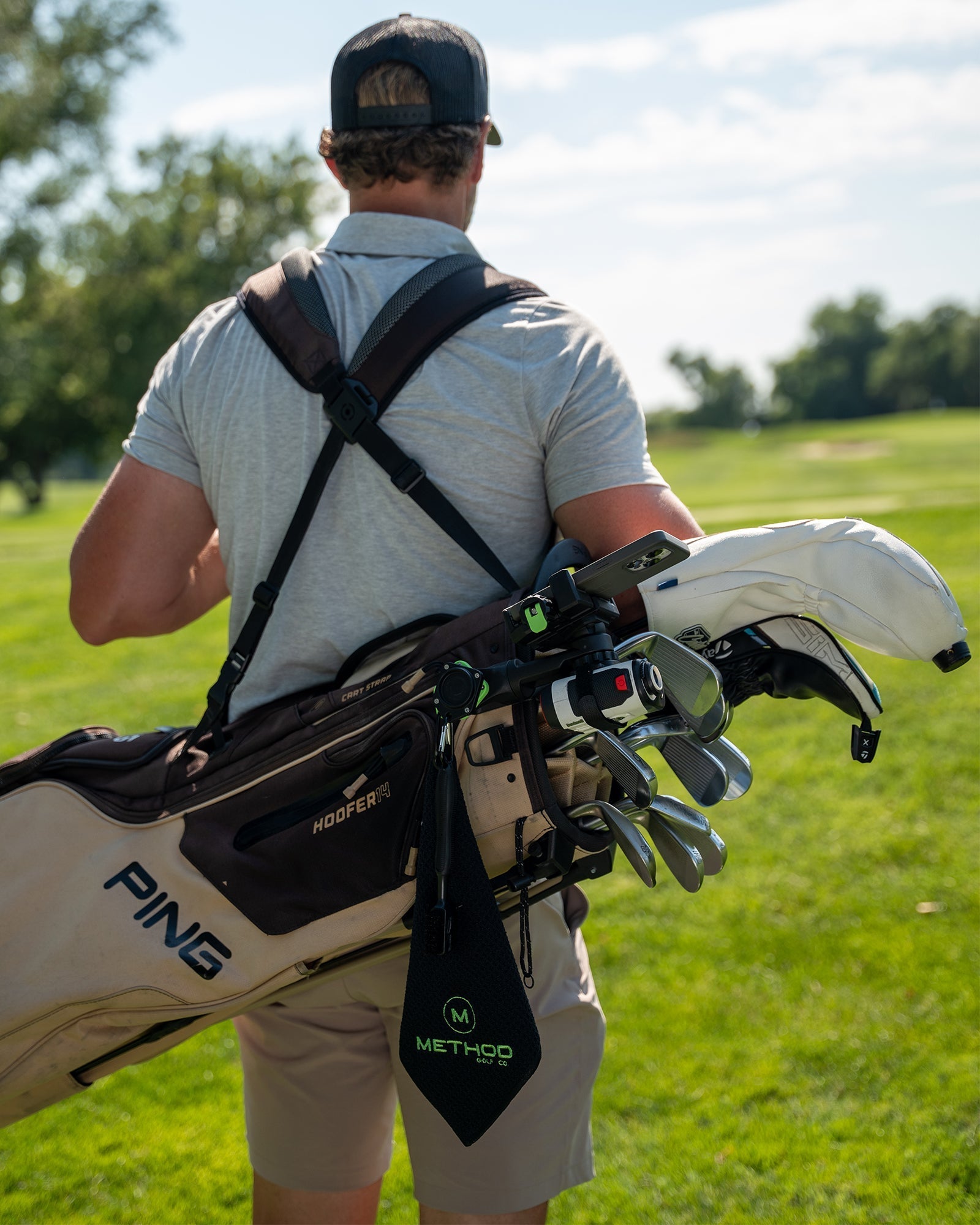Why Your Phone Might Be the Most Underrated Training Tool in Golf
After thirty years of teaching golf and watching technology transform how we play the game, I've noticed something fascinating: the most powerful training aid most golfers own is sitting right in their pocket.
Your smartphone.
I remember when I first started taking lessons myself, way back in the late '80s. If my coach wanted to show me my swing, we'd use a bulky VHS camcorder, then huddle around a tiny screen in the pro shop. The feedback loop was slow, cumbersome, and frankly, not very effective.
When I started teaching and coaching in the late 90s, things were not all too different, and honestly, most coaching was done without the aid of technology altogether.
Fast forward to today, and I've watched countless students transform their games through the intelligent use of their phones. But here's the thing – most golfers still aren't maximizing this incredible tool they already own.
The Power of Immediate Visual Feedback
The human brain processes visual information 60,000 times faster than text. When I tell a student "your clubface is open at impact," they might nod politely, but when they actually see it on video, that's when the real learning happens.
Several years ago, before I started working exclusively with teenage competitive golfers, I was working with James, a father of a junior golfer who was a mid-handicapper struggling with a nasty slice. We tried everything – grip changes, alignment adjustments, swing path drills. Nothing seemed to stick. Then one day, I positioned his phone to capture his swing from down the line. When he watched himself, his eyes widened. "My clubface is wide open!" he exclaimed. That visual confirmation was worth more than a thousand verbal instructions.
The transformation was remarkable. Within three range sessions, his slice had turned into a gentle draw. The difference? He could finally see what he was doing wrong.
Creating Your Own Feedback Loop
Here's where many golfers go wrong: they might occasionally film their swing, but they don't create a consistent feedback loop. The key is making video analysis a regular part of your practice routine.
I recommend setting aside 15 minutes of every practice session for video work. Start with a few swings to warm up, then set up your phone to capture 3-5 swings from both face-on and down-the-line angles. Watch each one immediately, making small adjustments based on what you see.
The challenge, of course, is positioning your phone properly. For years, I watched students precariously balance their phones against water bottles or headcovers, only to have them topple over mid-swing. Some would bring tripods, which work well but are cumbersome to carry alongside all your other gear.
That's why I was genuinely excited when I first came across Method Golf's phone mounting systems. Their CaddyStack systems – whether you're using the RiderStack for carts, PushStack for push carts, or CarryStack for those who prefer to walk – solve this problem elegantly. The magnetic mounting system keeps your phone secure and positioned at the perfect angle for swing capture.
Beyond Swing Analysis: The Modern Practice Session
But recording your swing is just scratching the surface of how your phone can improve your game. Here are some approaches I've found transformative with my students:
Tempo Training
The rhythm of your golf swing is perhaps its most crucial element. I've had students use metronome apps to develop consistent timing. Try setting a metronome to 80-90 beats per minute – backswing on beat one, downswing on beat two. This simple exercise has helped more of my students break scoring barriers than almost any other drill.
Course Management Practice
One of my favorite exercises with competitive players is to have them record themselves talking through shot selection during practice rounds. Listening back to these recordings often reveals flawed decision-making patterns that they weren't aware of. "I notice I always try to hit hero shots from the rough instead of taking my medicine," one of my college players observed after reviewing his recordings.
Swing Comparisons
The ability to overlay your swing with a pro's swing or compare your current swing with your swing from six months ago is incredibly powerful. Apps like V1 Golf (which I notice Method Golf has partnered with) make this process simple.
The Mental Game Connection
Perhaps the most overlooked benefit of phone-based training is its impact on the mental game. When you can objectively see your progress over time, it builds confidence. I've saved swing videos from students when they're playing their best, then had them review these videos during slumps. Seeing yourself execute perfectly is a powerful reminder that you have the ability – even when your current results suggest otherwise.
Integration Is Key
The biggest mistake I see golfers make with technology is treating it as separate from their regular practice. Your phone shouldn't be an occasional training aid – it should be integrated into every aspect of your practice routine.
This is why I appreciate Method Golf's approach. Their magnetic mounting systems and accessories aren't just about holding your phone – they're about making technology an integrated part of your golf experience. Whether it's the RiderStack for cart golfers, the PushStack for those with push carts, or the CarryStack for walking golfers, these systems keep your phone accessible throughout your round.
The BagStack Gear Hub is particularly clever – it creates a central station for all your tech accessories right on your bag. When technology is this accessible, you're much more likely to use it consistently.
Finding Your Own Method
After nearly three decades of teaching, I've learned that the best training approach is the one you'll actually use consistently. Some of my students dive deep into launch monitor data and 3D motion analysis. Others prefer a simpler approach focused on a few key positions.
What matters is finding a method that works for you – one that fits seamlessly into how you play and practice.
I encourage you to experiment with using your phone more intentionally during practice. Start simple – just recording and reviewing your swing from two angles. As this becomes habit, you can explore more advanced applications.
The technology available to the average golfer today would have seemed like science fiction when I started teaching. The pros have always had access to sophisticated training tools, but now, with nothing more than the phone in your pocket and a reliable way to position it, you can create a feedback system that rivals what was available only at the highest levels of the game just a few years ago.
The gap between how good you are and how good you could be often comes down to quality feedback. Your phone, properly used, might just be the missing piece in your golf development. And having the right accessories to integrate that technology into your game can make all the difference between occasional use and consistent improvement.
After all, the best golf tip I can give after thirty years of teaching isn't about your grip or stance – it's about creating a consistent feedback loop that helps you improve every time you practice. Your phone might just be the most powerful training aid in your bag. You just need to learn how to use it.
About the Author
PGA of America Golf Professional Brendon Elliott is an award-winning coach and golf writer. Check out his weekly Monday column on RG.org, sign up for his newsletter, and visit OneMoreRollGolf.com to learn more about Brendon and his work.
